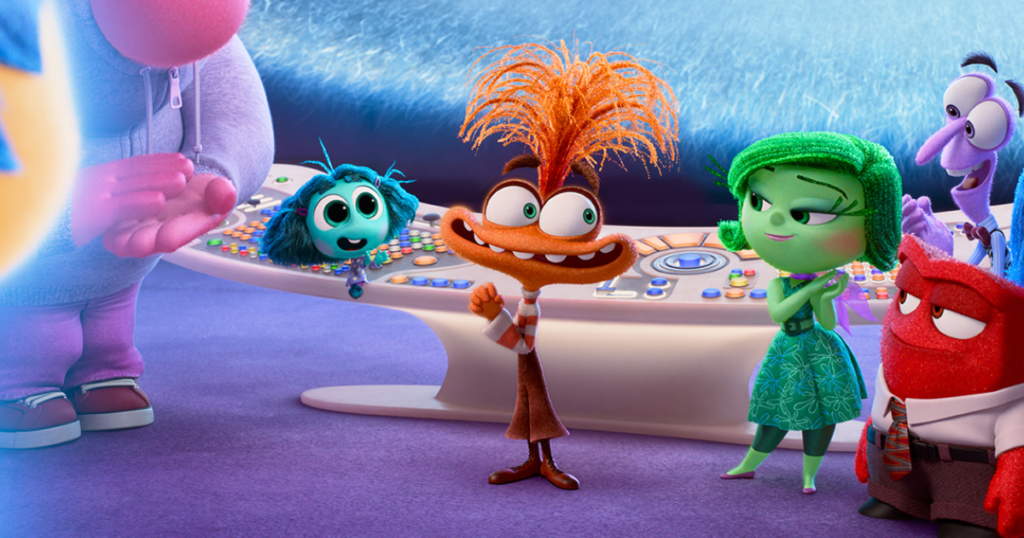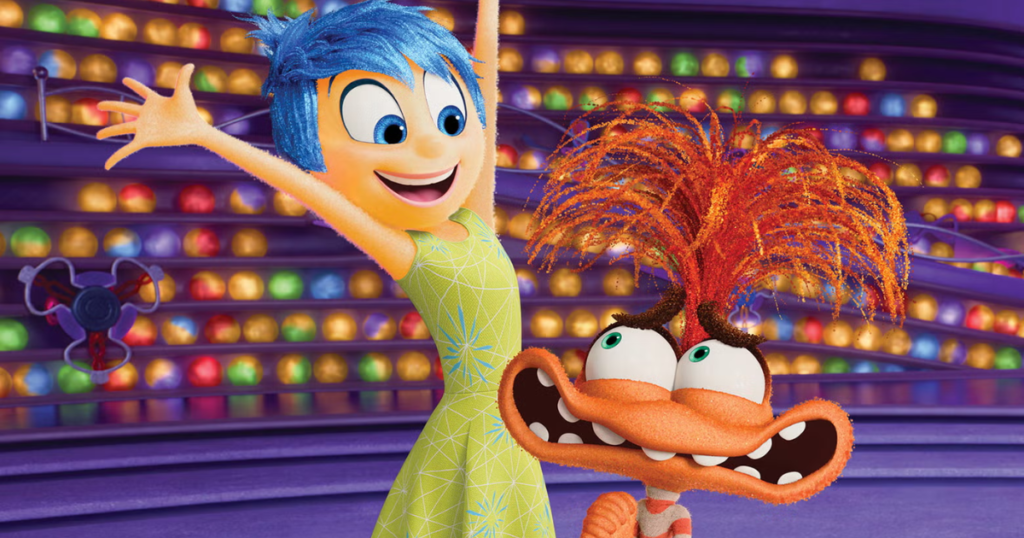
The film “Inside Out” resonated with audiences worldwide, offering a unique and touching portrayal of human emotions through the eyes of a young girl named Riley and the emotions inside her mind. With the highly anticipated sequel, “Anxiety Inside Out 2,” fans are excited to see how the movie will continue to explore the complex emotional landscape, this time with a deeper focus on anxiety. In this blog, we’ll dive into the psychology behind the characters in “Anxiety Inside Out 2,” examining how the film represents anxiety and its impact on mental health.
Understanding Anxiety in “Inside Out”
Before we explore the psychology behind “Anxiety Inside Out 2,” it’s important to understand how anxiety was portrayed in the first film. In “Inside Out,” the main characters—Joy, Sadness, Anger, Fear, and Disgust—represented the core emotions that guide Riley’s actions and decisions. Fear played a significant role in the movie, often depicted as a protective force, ensuring Riley stayed out of harm’s way. However, the subtle presence of anxiety was also evident, particularly as Riley faced new challenges and transitions, such as moving to a new city.
Anxiety is a natural response to stress, often manifesting as worry, nervousness, or unease about future events. In children and adolescents, anxiety can be triggered by changes, social pressures, or academic challenges. The portrayal of Fear in “Inside Out” offered a glimpse into how anxiety might manifest in everyday situations, but “Anxiety Inside Out 2” promises to delve deeper into this emotion, providing a more comprehensive look at its psychological underpinnings.
The Role of Anxiety in “Anxiety Inside Out 2”
As the title suggests, “Anxiety Inside Out 2” will focus on the character of Anxiety, a new addition to the emotional cast. This character represents the growing awareness of anxiety as a distinct and influential emotion in Riley’s life, especially as she enters adolescence. The sequel aims to depict how anxiety interacts with other emotions and how it shapes Riley’s experiences and worldview.
Anxiety, as a psychological construct, is multifaceted. It encompasses both cognitive and physical components, including racing thoughts, excessive worry, and physical symptoms like increased heart rate or sweating. “Anxiety Inside Out 2” is expected to bring these aspects to life, illustrating how anxiety can dominate an individual’s thoughts and influence their behavior.
Psychology Behind the Character of Anxiety
The character of Anxiety in “Anxiety Inside Out 2” is likely to be a complex and nuanced portrayal of this emotion. Psychologists often describe anxiety as a “future-oriented” emotion, meaning it is primarily concerned with anticipating and preparing for potential threats or challenges. Unlike Fear, which reacts to immediate dangers, Anxiety is more focused on what might happen, often leading to excessive worry and overthinking.
In the film, Anxiety might be depicted as a character constantly on high alert, always anticipating the worst-case scenario. This portrayal aligns with cognitive-behavioral theories of anxiety, which suggest that individuals with anxiety tend to overestimate the likelihood of negative outcomes and underestimate their ability to cope with them. By personifying Anxiety in this way, “Anxiety Inside Out 2” can offer viewers a relatable and insightful look into how anxiety operates on a cognitive level.
The Impact of Anxiety on Other Emotions
One of the most intriguing aspects of “Anxiety Inside Out 2” will be the interaction between Anxiety and the other core emotions. Anxiety often exacerbates or influences other emotions, such as Fear, Anger, and Sadness. For example, anxiety can amplify Fear, making it more difficult for an individual to assess threats realistically. It can also trigger Anger when the individual feels overwhelmed or frustrated by their anxious thoughts.
In the context of the film, these interactions could be portrayed as conflicts or collaborations between the characters. Anxiety might frequently clash with Joy, as the former’s focus on potential dangers can dampen the latter’s efforts to maintain a positive outlook. Similarly, Anxiety might push Sadness to dwell on negative outcomes, leading to rumination and depressive thoughts.
Understanding these dynamics is crucial in managing anxiety in real life. Cognitive-behavioral therapy (CBT), a widely used treatment for anxiety, often involves identifying and challenging the negative thought patterns that anxiety creates. “Anxiety Inside Out 2” has the potential to illustrate these psychological principles in an accessible and engaging way, helping viewers recognize and address their own anxiety-related thought patterns.
The Influence of Developmental Psychology
As Riley grows older, her emotional landscape becomes more complex, reflecting the changes that occur during adolescence. Developmental psychology provides valuable insights into how anxiety evolves during this critical period. Adolescents often face new stressors, such as increased academic pressure, social dynamics, and identity formation, all of which can contribute to heightened anxiety.
“Anxiety Inside Out 2” is expected to explore these developmental changes, showing how Riley’s anxiety may be influenced by her evolving identity and the challenges she faces as a teenager. The film might also address how Riley learns to cope with anxiety, potentially introducing strategies like mindfulness, relaxation techniques, or cognitive restructuring. By incorporating these elements, the movie can provide a realistic and educational portrayal of anxiety management.
The Cultural and Social Context of Anxiety
In addition to individual factors, “Anxiety Inside Out 2” may also touch on the cultural and social context of anxiety. In recent years, there has been growing recognition of the prevalence of anxiety disorders, particularly among young people. Social media, academic pressures, and global events have all contributed to rising anxiety levels, leading to what some experts have called an “anxiety epidemic.”
The film could explore how these societal factors impact Riley’s anxiety, highlighting the broader cultural forces at play. For instance, Riley might experience anxiety related to social media, where the pressure to present a perfect image can lead to feelings of inadequacy and self-doubt. Alternatively, the film might address the impact of current events, such as environmental concerns or political instability, on Riley’s mental health.
By situating Riley’s anxiety within a broader social context, “Anxiety Inside Out 2” can offer a more comprehensive understanding of the factors that contribute to anxiety in today’s world. This approach also underscores the importance of addressing anxiety on multiple levels, from individual coping strategies to societal changes that reduce stress and promote mental well-being.
The Potential Impact of “Anxiety Inside Out 2” on Audiences
“Anxiety Inside Out 2” has the potential to make a significant impact on audiences, particularly younger viewers who may be struggling with anxiety themselves. By personifying Anxiety and exploring its interactions with other emotions, the film can help demystify this often-misunderstood emotion and encourage open discussions about mental health.
Moreover, the movie can serve as a valuable educational tool for parents, teachers, and mental health professionals. By depicting the psychological mechanisms underlying anxiety, “Anxiety Inside Out 2” can provide viewers with a deeper understanding of how anxiety works and how it can be managed. This knowledge is crucial in fostering empathy and support for individuals with anxiety, particularly children and adolescents who may not yet have the tools to articulate their feelings.
“Anxiety Inside Out 2” is set to be an insightful and impactful exploration of anxiety, offering valuable lessons for viewers of all ages.
Conclusion: The Promise of “Anxiety Inside Out 2”
As we eagerly await the release of “Anxiety Inside Out 2,” it’s clear that the film has the potential to offer a powerful and insightful exploration of anxiety and its psychological underpinnings. By focusing on the character of Anxiety and its interactions with other emotions, the movie can shed light on the complex and multifaceted nature of anxiety, providing viewers with both entertainment and education.
Whether you’re a fan of the original “Inside Out” or someone interested in the psychology of emotions, “Anxiety Inside Out 2” promises to be a thought-provoking and meaningful film. As we continue to navigate the challenges of the modern world, the insights offered by this movie can help us better understand and manage the anxiety that so many of us experience. In the end, “Anxiety Inside Out 2” is not just a film about a young girl’s emotions—it’s a reflection of our collective journey toward mental health and well-being.
Read more: Anxiety Inside Out 2: Sequel’s Impact on Mental Health Awareness
Read more: How Anxiety Inside Out 2 Depicts the Emotional Struggles of Growing Up
FAQs
What is “Anxiety Inside Out 2” about?
“Anxiety Inside Out 2” focuses on the character of Anxiety, exploring how this emotion interacts with other core emotions in Riley’s mind as she navigates the challenges of adolescence.
How does “Anxiety Inside Out 2” portray anxiety?
The film portrays anxiety as a complex and influential emotion that affects Riley’s thoughts, behaviors, and interactions with other emotions like Fear, Anger, and Sadness.
Why is anxiety a focus in “Inside Out 2”?
Anxiety is a common and significant emotion, particularly during adolescence. “Inside Out 2” aims to provide a deeper understanding of anxiety and its impact on mental health.
How does “Anxiety Inside Out 2” address the psychology of emotions?
The film explores the psychological mechanisms underlying anxiety, including its cognitive and physical components, and its interactions with other emotions.
Can “Anxiety Inside Out 2” help viewers understand and manage anxiety?
Yes, by depicting anxiety in a relatable and accessible way, the film can help viewers recognize their own anxiety-related thought patterns and learn strategies for managing this emotion effectively.
Read more: Self-control is strength. calmness is mastery. you – tymoff
Shaista specializes in Personality Psychology and Organizational Behaviour, with a deep interest in how people think, grow, and interact within systems. She writes for multiple websites, bringing clarity and insight to topics across human behavior, mental health, and workplace psychology.



Mat6tube Thanks to the admin’s dedication, this site is sure to gain recognition quickly for its excellent material.
Mau Nonton film gratis tema selingkuh bisa disini
Tech to Force Hi there to all, for the reason that I am genuinely keen of reading this website’s post to be updated on a regular basis. It carries pleasant stuff.
Baddiehubs For the reason that the admin of this site is working, no uncertainty very quickly it will be renowned, due to its quality contents.